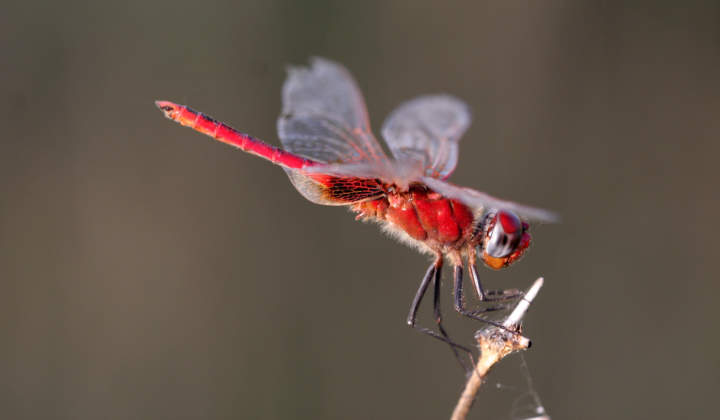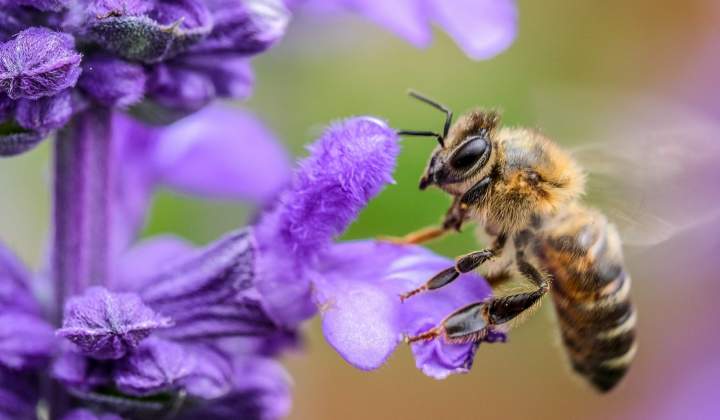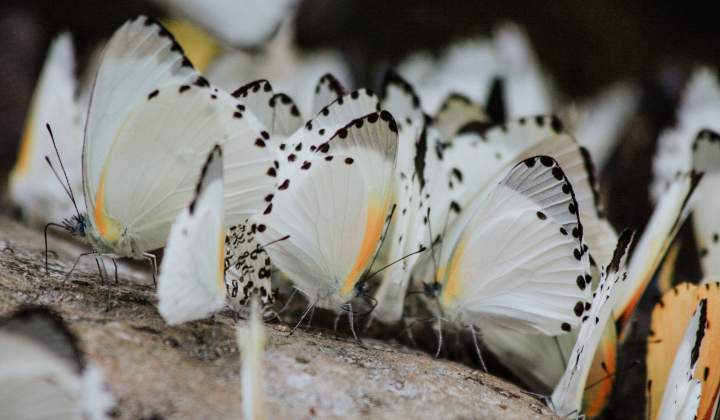Executive Summary
A great majority of insects provide unique and irreplaceable ecosystem services, including pollination, recycling, and nutrient provisioning. Striking declines in diversity and abundance, in some cases upwards of 75% in less than 30 years, have been documented in insect communities. Because loss and degradation of habitats and other contributing factors usually cross political boundaries, international cooperation is essential to mitigate or reverse such declines.
Human activities clearly are the major causes of declines in the abundance and diversity of animals, including insects [1]. Insects occupy virtually all terrestrial habitats. Their spectacular diversity reflects their small size and short life cycles, which allow them to partition habitats and resources and adopt specialized lifestyles. Their specialization, however, makes insects vulnerable to changing environmental conditions. Hence, it is important to assess and ideally to predict where and how anthropic pressure affects insects, in order to support policy measures for their conservation and sustainable ecosystem services.
Joining with others [2] who have argued for specific measures to protect insect biodiversity, our academies urge implementation and public support of actions outlined at the end of this statement.
The „insect apocalypse“ – is it real?
Long-term studies have documented declines in the abundance and biodiversity of insects around the world, including a 75% decline in the total biomass of flying insects in Germany [3,4] and a 35% decline in global abundance of butterflies and moths [5] over 27-year and 40-year periods, respectively. These reports have raised concerns about a so-called „insect apocalypse“ and generated dire predictions of global ecological collapse, while some other publications on this topic have been criticized for methodological irregularities or limitations [6]. Long-term datasets derived from standardized sampling methods are essential for detecting declines, especially species with boom-and-bust population fluctuations [7].
Extinction risks have been evaluated for fewer than 1% of the described insect species [8]. Carrying out such evaluations is complicated by the vast numbers and diversity, small size, concealed habits, and complex life cycles of insects. Moreover, there is a critical shortage of taxonomists and of support for their work [9]. Consequently, the roughly one million known insect species likely represent less than 20% of all extant species [10]. Moreover, whereas most insect diversity resides in the tropics, most documented declines have been recorded in northern temperate regions. Thus, the existing estimates may not reflect global threat levels.
Consequences of decline and extinction
The impact of an overall global decline in insect numbers on human health and well-being is obscured by widespread misperceptions that insects are generally harmful. Indeed, only about 1% of all known insect species cause crop losses of 20-80% globally, enough food to feed a billion people, and fewer than 1% of mosquito species transmit diseases that kill at least 750,000 people annually.
An overwhelming majority of insect species contribute positively to ecosystem services and goods that are of tremendous value to humans. These benefits include provisioning services (food, raw materials, medicines), regulating services (pollination, decomposition, nutrient cycling, water purification, pest control, soil stability and fertility), and cultural services (recreation, education, scientific research). Nearly 90% of flowering plant species, including almost 75% of the world’s major crops, benefit from pollinators to reproduce via fruit and seed production, and most of these pollinators are insects [11]. The annual global value of insect pollination services, provided not only by bees but also by other insects [12], has been estimated to exceed $200 billion [13], and the demand for resources that require insect pollination is expected to increase.
Insect antagonists (e.g. predators and parasitoids) of plant-feeding insects play a critical role in sustaining plant communities, and their judicious use for biological control has been key in reducing dependence on insecticides for pest management. Nutrient cycling, soil formation, and even water purification are also influenced by insects. In many regions, termites break down dead wood and dung, thereby promoting soil fertility by recycling nutrients. In Nordic lakes, billions of midges emerging from their larval habitats link aquatic and terrestrial energy and nutrient cycles, moving vast amounts of nitrogen and phosphorus to fertilize terrestrial habitats. Insects are also major prey for freshwater fishes, amphibians, birds, and bats throughout the world. The 40% decline in the abundance of North American birds documented between 1966 and 2013 has been attributed in part to declines in the abundance of the insects on which they prey [14].
Human causes of insect decline
Among the most consequential human impacts affecting insect populations are habitat loss and degradation associated with agriculture, urbanization and residential development, as well as resource extraction. Habitat losses through land conversion are occurring in areas where insect diversity is highest [15]. Habitat quality is further affected by the use of agrochemicals, particularly insecticides. Agrochemical residues that retain insecticidal activity have adverse impacts on non-target insect species. Furthermore, the conversion of natural communities for agriculture reduces species diversity, including that of insects, and threatens adjacent ecosystems by creating barriers to dispersal and exposing insects to pesticides, invasive species, heavy metals, and light pollution.
Human-mediated redistribution of insect species, both deliberate and accidental, has led to the decline of many native species through competition with, and/or displacement by, invasive species. For example, the accidental introduction of an Argentine ant species into the unique vegetational community of the Cape provinces of South Africa led to the decline of indigenous ant species adapted to disperse the seeds of many plants.
Changing patterns of temperature and rainfall, caused by rising levels of greenhouse gases, are altering species distributions. For some species, populations have increased and ranges have expanded. For example, bark beetles in North America have become more abundant because of warmer winters, resulting in defoliation of coniferous forests. For many other species, climate change directly or indirectly can cause declines. Thus, Alpine and Arctic bumblebees are experiencing range compression, a result of decreasing suitability of habitats. Moreover, the increased frequency, intensity, and duration of extreme weather events have disrupted food- webs, producing seasonal mismatches between specialized insect pollinators and the plants that cannot reproduce without them.
Inappropriate use of pesticide applications can result in massive mortality of non-target insects, many of which are beneficial, often outside the treated area. And electrocution devices (“bug-zappers”), which are extremely inefficient at killing their target species (primarily mosquitoes), kill millions of non-target, beneficial species.
Finally, indirect drivers (e.g. markets, policies and societal awareness) are influencing ecosystems. Global markets for agricultural commodities, food, fiber or wood benefit human societies, but they also incentivize intensive production at the cost of insect populations and ecosystem services [16]. Agricultural and forest policies are not focusing enough on halting declines in biodiversity [17].
A call to action
Insect declines are global challenges that require international collaboration, as (i) the geographic distributions of threatened species often cross international borders and (ii) the globalization of trade has resulted in an increase in the number of accidentally introduced invasive species that may displace important native species. The planet is undergoing a massive urbanization, the conversion of wildlands to agriculture, and other human activities that degrade or destroy unique habitats. These changes alter food webs, resulting in the displacement or elimination of plants and animals, including insect communities. It is essential to protect threatened habitats, because when they disappear or become degraded, their insect inhabitants may be lost. Other major challenges to addressing insect declines are the paucity of data for documenting trends, the difficulty of identifying the various causal factors, and insufficient numbers of knowledgeable entomologists and ecologists. There is an urgent need to identify species at greatest risk, factors that threaten their survival, and consequences of their loss.
Protecting insect biodiversity is critically important for maintaining the integrity of managed and natural ecosystems, which are essential for water supplies, global agriculture and food security and safety. Finding solutions requires coordinated effort among many groups, including scientists and scientific societies, nongovernmental conservation organizations, policymakers at many levels, federal funding and regulatory agencies, science communicators, corporations, and private citizens around the world.
Recommendations
Actions recommended by our Academies include the following:
1) Encourageandsupportlong-termmonitoringofinsect species and biomass to identify stressors by means of (i) new technologies such as artificial intelligence, environmental DNA analysis and rapid whole-genome sequencing for species identification and monitoring and (ii) museum datamining.
2) Promote citizen science through support for (i) environmental and conservation movements and education of citizens to identify and monitor insects and
(ii) informing the public, including farmers, about the importance of insects and necessary changes in human behavior.
3) Identify and protect critical habitats at risk, in order to maintain communities of insect species in well- functioning food webs. Protected habitats should be large enough to withstand adverse influences of adjacent lands; declines have already been documented in many reserves designed before the importance of adjacent lands was recognized. Designs of reserves must also anticipate changes in habitat suitability associated with changing climatic conditions, and frequency of extreme weather events.
4) Adoptmitigationandadaptationstrategiestoaddress climate change and its effects, which are predicted to be severe drivers of insect shifts and declines in the future.
5) Regulate and incentivize changes in human activities that exact excessive tolls on insect communities and/or internalize the costs of non-target effects and other environmental degradation, especially for actions that do not appreciably improve human well-being. Develop and support eco-friendly (and thus insect-friendly) land-use systems.



